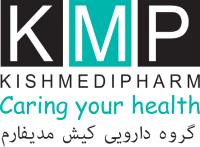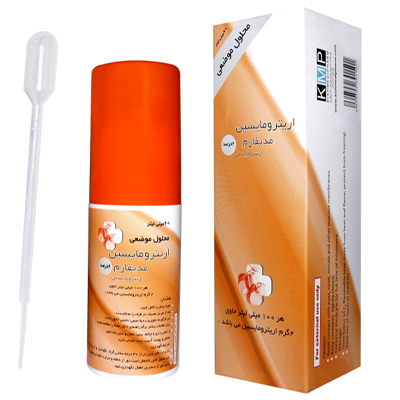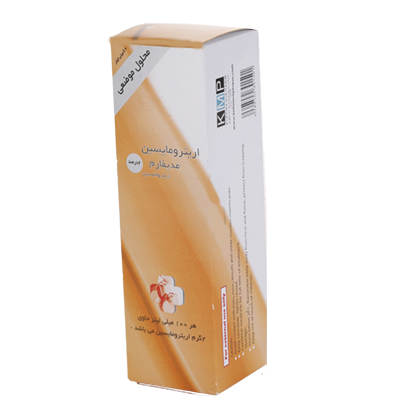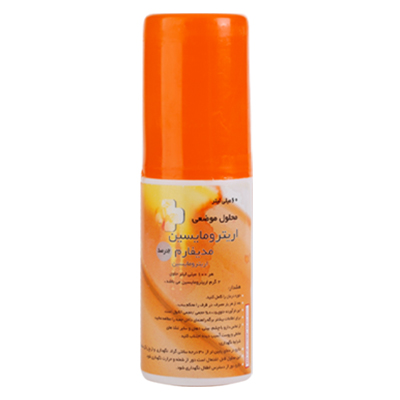Description
Erythromycin topical solution is one of the most well-known antibiotic drugs in the treatment of skin disorders. This drug, which has been used for decades to treat acne and superficial skin infections, has a special place among doctors and dermatologists due to its strong antibacterial effects. The topical form of this drug is considered an effective and safe option in the treatment of skin diseases by reducing systemic side effects and focusing the effect on the lesion site.
Chemical structure and pharmacological classification of erythromycin topical solution
Erythromycin is a member of the macrolide family, a group of antibiotics that act by inhibiting protein synthesis in bacteria. The large, complex ring structure of this drug enables it to inhibit the growth of microorganisms. Its pharmacological properties include activity against gram-positive bacteria and some gram-negative species.
-
Pharmaceutical classification:
-
Erythromycin belongs to the drug group Macrolides.
-
This class of antibiotics is known as bacterial protein synthesis inhibitors.
-
Macrolides are relatively broad-spectrum antibiotics that are often used to treat infections caused by gram-positive and some gram-negative bacteria.
-
-
Chemical structure:
-
Structurally, erythromycin is a 14-membered cyclic lactone to which sugar groups are attached.
-
This drug has a large macrolide ring to which two sugars, desosamine and cladinose, are attached.
-
Its molecular formula is C₃₇H₆₇NO₁₃ and its molecular weight is about 733.94 g/mol.
-
Another important structural feature is the presence of multiple hydroxyl groups, which play a role in the stability and biological activity of the drug.
-
-
Physicochemical properties:
-
Erythromycin is stable at room temperature but becomes unstable in highly acidic environments.
-
In topical form, its more stable salts, such as erythromycin base, are used, which are dissolved in suitable solvents.
-
This feature allows topical erythromycin formulations to have better stability and efficacy than oral forms under certain environmental conditions.
-
Mechanism of action of erythromycin topical solution
This drug directly controls acne by inhibiting the production of proteins essential for the survival of bacteria, especially Propionibacterium acnes. It also minimizes the redness and swelling caused by acne and skin infections by reducing the production of inflammatory substances in the lesion area. Thus, erythromycin topical solution is not only effective in eradicating the bacterial agent, but also plays a significant role in the clinical and cosmetic improvement of the skin.
Uses of erythromycin topical solution
Erythromycin topical solution is known as one of the common drugs in the treatment of inflammatory skin diseases of bacterial origin, especially acne vulgaris. With its strong antibacterial properties and inhibitory effect on the growth of Propionibacterium acnes, this drug can play an effective role in the improvement of inflammatory, purulent lesions and inflammatory comedones.
Topical erythromycin is not limited to acne; it can also be used to treat some superficial skin infections, certain cases of infectious dermatitis, and even as an adjunct in the aftercare of superficial wounds. This solution, with its bacteriostatic properties without significant systemic effects, is a safe choice for long-term use in some patients.
The method of using the medicine requires precision and regularity. For maximum effectiveness, the skin of the affected area should be completely clean and dry before use. Then, an appropriate amount of the solution is applied evenly to the affected skin once or twice a day. This process should be continued without interruption and according to the doctor's instructions, because abrupt discontinuation of treatment can cause symptoms to return or even bacterial resistance.
Also, contact of the solution with mucous membranes such as the eyes, inside the nose, and mouth should be avoided, as there is a possibility of mucosal irritation or damage. In case of accidental contact, the affected area should be washed immediately with cold water. The uses of erythromycin topical solution are as follows:
-
Treatment of acne vulgaris:
The main use of the drug is; especially in mild to moderate stages, accompanied by inflammatory or purulent lesions. -
Folliculitis (inflammation of hair follicles):
Reducing inflammation-causing bacteria in the superficial follicles of the skin. -
Dermatitis of bacterial origin:
In cases of superficial infectious dermatitis, especially in sensitive areas such as the face or neck. -
Superficial wounds with risk of secondary infection:
Supplemental use to prevent infection in small cuts or scrapes on the skin. -
Adjunctive therapy alongside retinoids or benzoyl peroxide:
As a dual combination to simultaneously control inflammation and comedones in acne. -
Preventing the spread of superficial infections in susceptible patients:
Especially in patients with oily skin or a history of chronic skin infections. -
Treatment of skin inflammation caused by shaving or hair removal:
To reduce redness and prevent the growth of microbes in the treated areas. -
As an alternative choice for patients who cannot tolerate oral therapy:
In those who cannot use oral erythromycin due to digestive or allergic reasons. -
Use in teenagers with sensitive skin:
A relatively mild medication recommended for the treatment of acne during puberty. -
Treatment of skin lesions in patients with weakened immune systems (with caution):
For temporary control of the bacterial load on the skin surface in patients with weakened immune systems.
Topical erythromycin solution, with its wide range of applications, has a significant place in the drug therapy of inflammatory skin diseases, both in the field of treatment and prevention.
Contraindications for the use of erythromycin solution
Although erythromycin topical solution is considered a relatively safe and effective drug for the treatment of inflammatory and infectious skin lesions, especially acne vulgaris, in some specific situations, its use may be associated with risks or may not achieve the desired therapeutic outcome. Awareness of these contraindications, especially for physicians, pharmacists, and patients, plays a fundamental role in preventing unwanted side effects and increasing the effectiveness of the drug.
One of the most important contraindications is a known history of allergy to erythromycin or other macrolide antibiotics. Allergic reactions can range from mild, such as redness and itching, to more severe, such as contact dermatitis or anaphylaxis.
Also, in patients with very sensitive, inflamed skin or open wounds, the use of this solution may cause severe irritation, excessive dryness or even exacerbation of inflammation. The use of this medicine in such cases should only be done under the advice of a doctor and with special precautions.
On the other hand, simultaneous use with other irritating topical compounds such as retinoids, benzoyl peroxide or salicylic acid without an appropriate time interval can increase the likelihood of skin irritation. In these situations, combined use is prohibited without a doctor's advice. In pregnant and lactating women, although systemic absorption of the drug through the skin is very low, it is recommended to use this drug only if necessary and with a doctor's prescription.
-
Sensitivity or allergy to erythromycin or other macrolides
-
Very sensitive, sore, or inflamed skin
-
Concomitant use with other topical irritant medications without a time interval
-
Unauthorized use during pregnancy or breastfeeding without medical advice.
-
History of severe allergic reaction to topical antibiotics
Common and rare side effects of erythromycin topical solution
Although the use of erythromycin topical solution is relatively safe and well tolerated, like other topical medications, it can cause side effects in some people. These side effects may vary depending on individual skin characteristics, duration of use, or the presence of underlying diseases. In general, side effects are divided into two categories: common and rare, which are referred to by title below.
-
Dry skin:
One of the most common side effects, especially early in treatment, may require the use of non-comedogenic moisturizers. -
Mild burning or itching:
It is usually temporary and self-limiting, especially after the first few uses. -
Local redness or inflammation:
Due to temporary skin irritation in the area of application. -
Superficial peeling of the skin:
Caused by a reaction to the drying effect of medication or mild skin peeling.
Rare side effects:
-
Allergic contact dermatitis:
Allergic reaction manifested by severe redness, swelling, and severe itching. Requires immediate discontinuation of the drug. -
Hives or allergic-like reactions:
If you notice hives or a widespread skin rash, you should see a doctor immediately. -
Worsening acne or the appearance of new lesions:
In some rare cases, acne may temporarily worsen before improving. -
Severe mucosal irritation:
Accidental contact with the eyes, mouth, or inside the nose may cause significant irritation and inflammation.
If any severe or persistent side effects occur, it is recommended to stop taking the medication and consult a doctor or pharmacist.
Important drug interactions of erythromycin topical solution
Concomitant use of topical erythromycin with other topical antibiotics such as clindamycin or tretinoin should be done with caution. Interaction with products containing alcohol or acidic ingredients can increase skin irritation. Consultation with a physician is required if certain systemic medications are being used.
Advantages of Kish Medipharm Erythromycin Solution
Kish Medipharm Pharmaceutical Company, utilizing modern pharmaceutical technologies and strict quality control, has provided a product with a stable formulation, optimal effectiveness, and minimal side effects. Appropriate packaging, long shelf life, and ease of use have distinguished this solution among other similar products. Its clinical effectiveness in treating numerous cases of acne has also been confirmed by experts.
Erythromycin topical solution is a reliable tool in the treatment of bacterial and inflammatory skin lesions. With regular and correct use, one can witness a significant and lasting improvement in the appearance and health of the skin. Due to the possibility of antibiotic resistance, self-medication or irregular use is not recommended. Medical supervision and adherence to the course of treatment will guarantee the therapeutic success of this drug.





Reviews
There are no reviews yet.